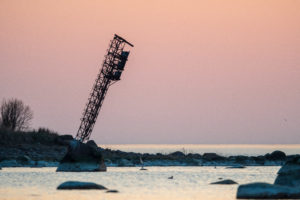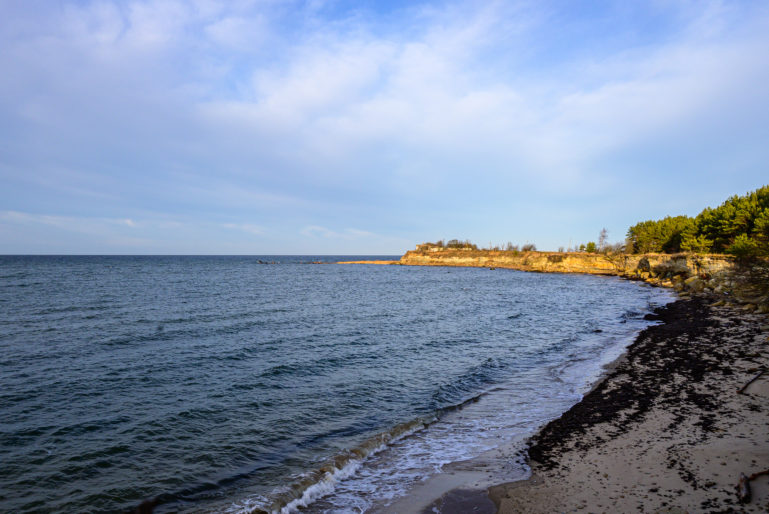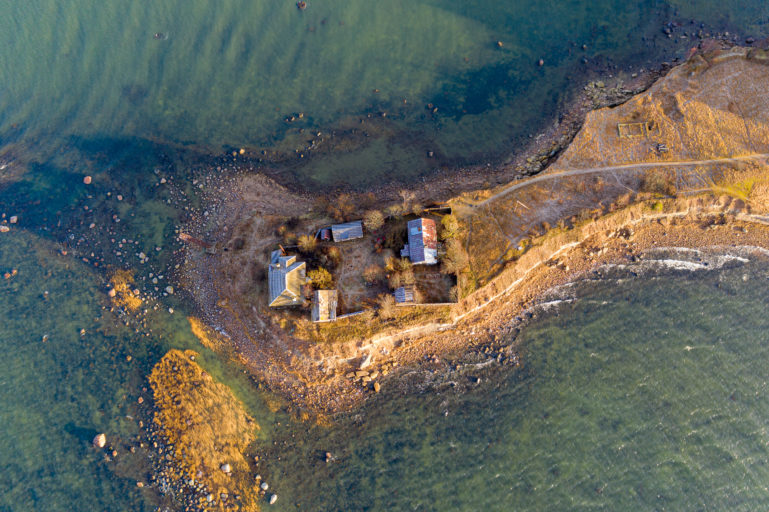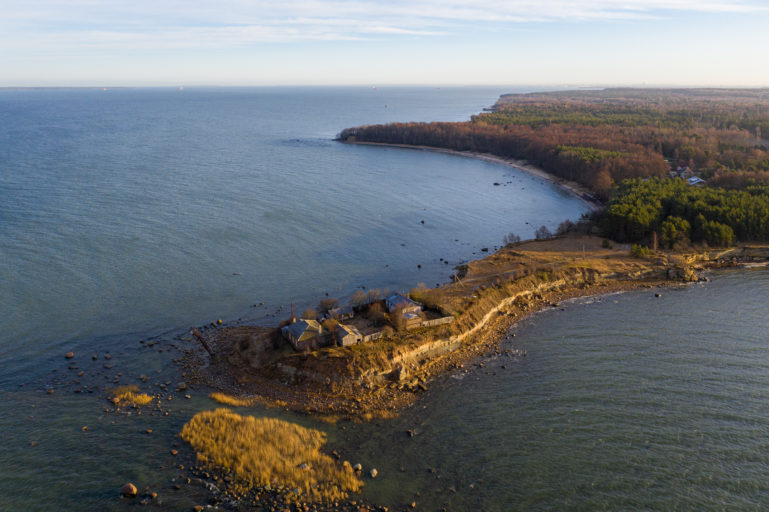Ninamaa cape is located on on the northwestern end of the Suurupi Peninsula. The sandstone cliffs border the seashore for more than a kilometer. The height shall not exceed five meters. The sandstone walls are not exceptional, but the Ninamaa sandstone is peculiar – twisted, crushed and wrinkled, resembling an abstract work. Cape Ninamaa remains in the Muraste Nature Reserve. Time is going on and Ninamaa cape disappearing into the sea.
A whole complex of a siren and service buildings were built in 1898.

During the winter and spring nights, fog often forms in Estonian maritime waters. In case of poor visibility or fog, the seafarers were notified of the danger and aided in navigation by fog signals. Then the crew of the lighthouse started to ring a bell at certain intervals. In later years, a siren was installed. The Suurupi Rear Lighthouse controlled the Front Lighthouse and the Ninamaa siren station, which was on the Ninamaa cape, 1500 m from the Rear Lighthouse, and where a whole complex of a siren and service buildings were built in 1898.
Lighthouses were AGA´s true core business until the beginning of the 1980s.

First in Europe with a built-in loudspeaker – In 1919 AGA, Asea and LM Ericsson formed Svenska Radio AB to concentrate on Swedish research and development within radio technology. AGA radios and gramophones became widely established in the consumer market. In 1927 AGA presented the first mains-powered radio receiver in Europe with a built-in loudspeaker. As we see from the photo, AGA produced also nautophones. What it is? Nautophone, special device for emitting fog signal.
-
Read more about Ninamaa cape.
- Google maps link.



